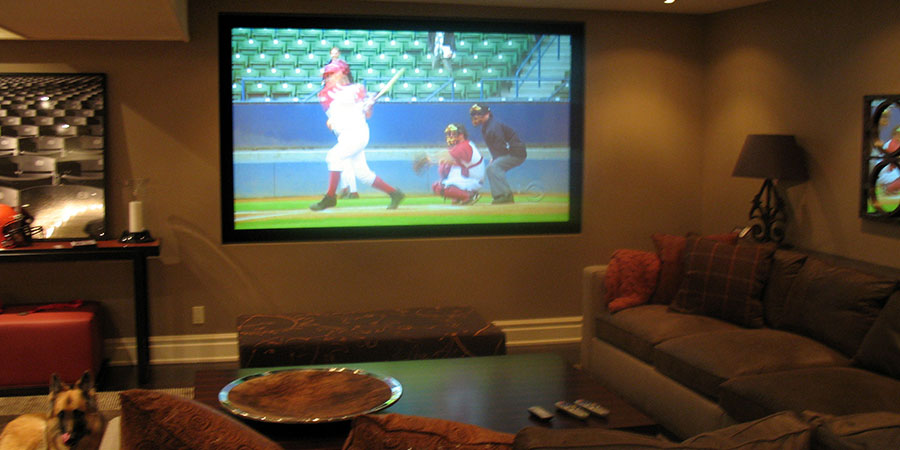
Converting a home basement into a home theater entertainment space has been a popular American pursuit. In practicality, what better way to use an under-utilized space?
Here are some things to consider before turning your basement into a home theater room:
Water and Electronics Don’t Mix
Some home basements have been ignored or neglected, leaving them damp, musty, and prone to water seepage. Moisture can usually be controlled with a dehumidifier, but if your basement has more serious water issues, you might want to consider drains, pumps, and various forms of waterproofing effective at controlling seepage.
Size Matters
You want a good-sized space – 25 x 25 feet or larger – for plenty of room for seating and a big screen. Keep in mind that the theater walls will be built away from the basement walls and take up more space.
Ductwork
Are there any heating/cooling ducts running through the space? It will be feasible to either move them or box them out. Condensation is also a consideration. The last thing you want is water dripping on electronics gear, the new carpeting, and furniture.
Noise from Heating and Cooling
Heating and cooling systems emit high noise levels. It might be necessary to build the theater on the opposite side of the basement, or soundproofing may be done. Heavy-duty R-19 insulation or sound-damped wallboard is better than standard drywall.
Soundproofing
This should be done in case sound might leak upstairs. If you really need to, plan on hiring a soundproofing specialist. As a DIY project, you can use a rubber material called Acoustipad on every floor joist on the bottom of the floor. Between that, R19 insulation and wallboard can be placed. A little vibration and bass may leak out, but not to the point of disturbance. Overall room carpeting will add to the overall sound absorption as well.
Lighting
This is a vital consideration since most basements no windows at all. Try out some recessed high-hats in the front, middle and back of the room with wall sconces to create a nice movie-time feeling. Path lighting is another consideration if seating is arranged in rows.
The Equipment
Screen size is the first consideration. Do you want a movie-theater screen that consumes an entire wall or are you willing to settle for something smaller? Next up is sound. What will it take to ensure a thrilling surround sound system experience? Carefully place in-wall speakers that are insulated so no sound escapes. Upwards of 10 speakers, including a subwoofer or two is typical.
If you need carpet cleaning and or stain removal within your home theater room we recommend A to Z Carpet Cleaning.
